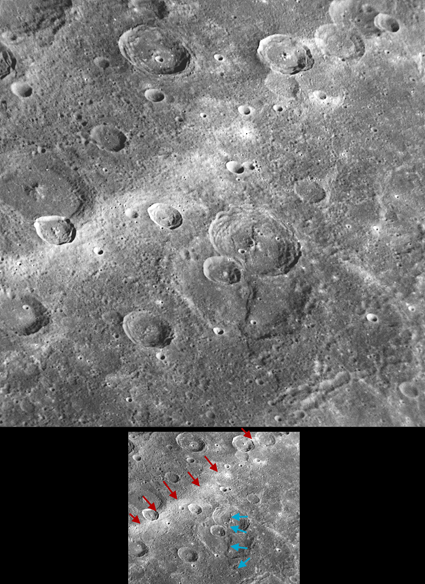With the exception of Pluto, Mercury is a neglected
planet when it comes to exploration - Pluto on the
other hand has NEVER been visited - the New Horizons probe is on its way to solve that discrepancy.
In addition,
you may want to check out
AeroSpaceGuide. This site has some interesting
facts as well as mission summaries.
Before MESSENGER, only one probe
has ever visited Mercury, and that is
Mariner 10. Launched in 1973, the Mariner 10
probe was the first probe to use gravity assist. By
using the gravity of
Venus, the Mariner 10 was able
to use very little fuel while managing a flyby of
Mercury three times. The mission ended in March of
1975. As of right now, the
MESSENGER probe in en route to Mercury. The
probe was launched on August 2, 2004 and will enter
the
orbit of Mercury on March 18, 2011. While en
route,
Earth will be re-visited and
Venus will be
visited twice.
The October 6, 2008 flyby of Messenger has brought forth new questions and confirmation of old ideas. There is a tiny atmosphere and a huge magnetic field. More of Mercury's surface is revealed, this time with rays and scarps (also called rupes).

The rays are most likely debris from newer impacts. An interesting discovery are the location of the scarps, some forming within newer craters which mean these are a fairly new geological feature. A large crater was spied due north, but we will have to wait until orbital insertion. As a side thought, I have wondered if tidal flexing by the Sun could form these scarps.
The European Space Agency has plans
to send its own Mercury probe called
BepiColombo. The planned launch date is January
2011 and the mission is planned to end in January
2015. It is currently under development.
Back to Top |

